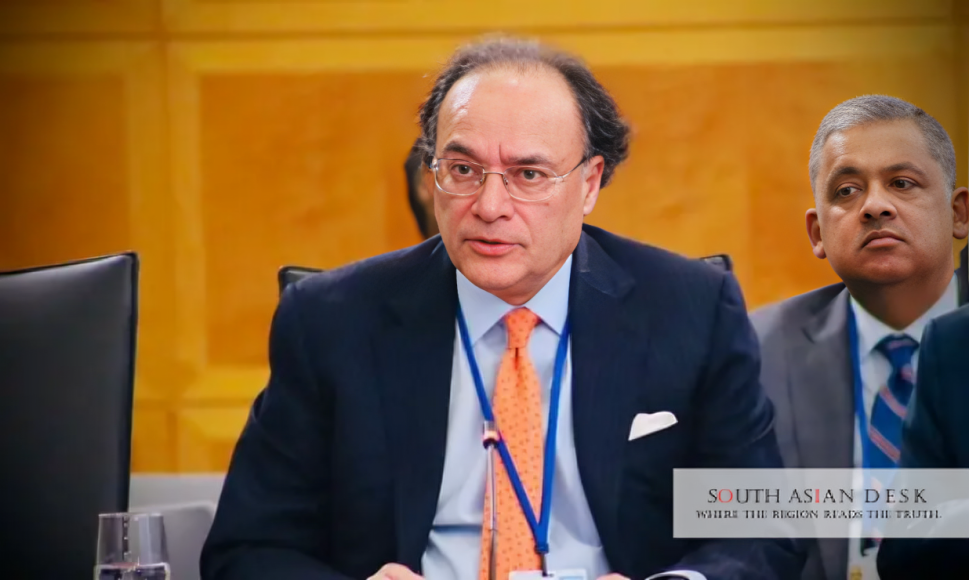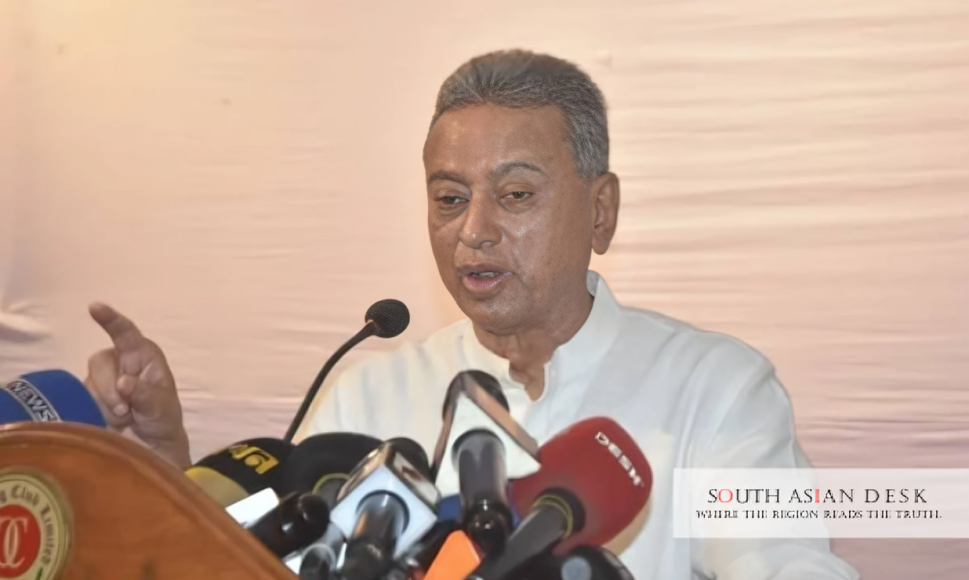Islamabad: Finance Minister Muhammad Aurangzeb warned that climate change and rapid population growth pose major Pakistan 3 trillion economy hindrances. In a recent television interview, he highlighted these as existential threats derailing the nation’s path to a $3 trillion economy from its current $411 billion valuation. These Pakistan 3 trillion economy hindrances underscore broader regional vulnerabilities in South Asia, where countries like India and Bangladesh face similar pressures from environmental risks and demographic surges, potentially stalling collective economic progress and stability.
Finance Minister Aurangzeb Climate Change Warnings
Finance Minister Aurangzeb climate change concerns were central to his remarks. He stated that climate change is no longer an academic discussion but a daily reality for Pakistanis. During his interview on Geo News’ Capital Talk on Wednesday, October 22, 2025, Aurangzeb pointed to the onset of smog season in Lahore and recent floods devastating large areas.
Pakistan ranks first in the Global Climate Risk Index 2025 for impacts from extreme weather in 2022, with economic losses of $30 billion primarily from floods. The index, published by Germanwatch, notes that floods caused 32 percent of global economic losses from 1993 to 2022, totalling $1.33 trillion adjusted for inflation.
Aurangzeb explained that the frequency and intensity of extreme events are rising. He participated in three forums last week discussing climate change. “There is no way to put a value on the precious human lives we have lost,” he said regarding flood deaths.
The government’s growth target for this year is 4.2 percent, but Aurangzeb anticipates a reduction of 0.4 to 0.5 percent due to climate impacts. Eighty percent of recent flood damage occurred in Punjab, hitting agriculture sectors like rice and cotton production.
Prime Minister Shehbaz Sharif has directed Climate Change Minister Musadik Malik to prepare a 300-day plan for mitigation. In an October 18, 2025, press release, the Finance Ministry highlighted efforts to strengthen climate resilience, including commitments to fund rescue operations from domestic resources amid recurring floods.
Finance Minister Aurangzeb climate change emphasis aligns with World Bank assessments. The bank’s overview notes that the 2022 floods exacerbated macroeconomic volatility and poverty, with Pakistan’s vulnerability stemming from unaddressed issues like unproductive agriculture and an unsustainable energy sector.
Pakistan Population Growth Economic Impact
Pakistan population growth economic impact is equally alarming, according to Aurangzeb. He identified unchecked population expansion as one of two key derailing factors for economic ambitions.
Pakistan’s population stands at 251 million as of 2024, per World Bank data. The annual growth rate is nearly 2 percent, contributing to resource strain. In a July 10, 2025, press release on World Population Day, Aurangzeb stressed the urgent need for population management to achieve a $3 trillion economy.
The poverty headcount ratio at $3.65 a day (2017 PPP) is 42.3 percent in fiscal year 2024, affecting millions. This rate is projected to remain steady in 2025, adding 1.8 million more to poverty rolls. High growth rates hinder wage and employment gains, perpetuating deprivation.
Aurangzeb noted that 45 percent of the population lives below the poverty line, citing World Bank reports. This demographic pressure amplifies Pakistan 3 trillion economy hindrances by overwhelming infrastructure and services.
In South Asia, similar trends in neighbouring nations amplify regional risks, as rapid urbanisation and resource demands could fuel instability without coordinated policies.
Background: Economic Context and Reforms
Pakistan’s GDP was $373 billion in 2024, with growth at 2.5 percent following a 0.2 percent contraction in 2023. Projections show 2.6 percent growth in 2025, but hindrances persist.
The Finance Ministry’s September 25, 2025, press release on power sector debt resolution underscores fiscal discipline efforts. Aurangzeb has pushed structural reforms in taxation, energy, and state-owned enterprises to target a tax-to-GDP ratio of 13 to 13.5 percent.
Multinational exits, such as from Procter & Gamble and Shell, reflect challenges, though new entrants like Aramco signal potential. Former Finance Minister Miftah Ismail, in a separate interview, criticised high taxes and utility costs for deterring investment, advocating private sector leadership.
World Bank reports highlight protectionist policies and business environment issues as long-term barriers.
What’s Next: Addressing the Challenges
The government plans deep reforms under the IMF’s Extended Fund Facility. Aurangzeb advocates equitable global financial reforms for climate resilience, as stated in July 2025 press releases from the Fourth International Conference on Financing for Development.
Investments in human capital and green taxonomy for sustainable financing are priorities. The Finance Ministry’s October 18, 2025, release details partnerships for flood response and economic partnerships.
Pakistan must tackle these Pakistan 3 trillion economy hindrances through integrated policies on climate adaptation and population control to realise its growth potential.
Published in SouthAsianDesk, October 23rd, 2025
Follow SouthAsianDesk on X, Instagram, and Facebook for insights on business and current affairs from across South Asia.






